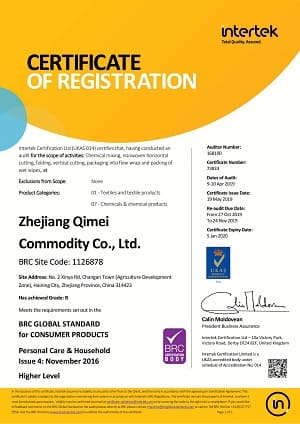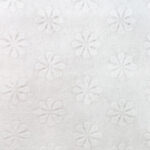Spunlace onwoven Tipo de tela: poliéster, material de mezcla de poliéster y viscosa, fibra de bambú, pulpa de madera (lavable), algodón o fibra de soja (biodegradable)
Plano o texturizado (su propio LOGOTIPO está disponible)
Peso: 30-80 g/m²
1/10/30/80/100/120/160 uds/paquete
Small size: These are usually around 15cm x 20cm (6 inches x 8 inches) and are convenient for use while traveling or for cleaning small areas such as paws or ears.
Standard size: These are usually around 20cm x 20cm (8 inches x 8 inches) and are suitable for use in everyday cleaning and grooming.
Large size: These are usually around 30cm x 30cm (12 inches x 12 inches) and are suitable for cleaning larger areas or for use in bathing and grooming.
Extra-large size: These are usually around 40cm x 40cm (16 inches x 16 inches) and are suitable for cleaning very large areas or for use in bathing and grooming.
1. Bolsa plástica resellable: este es el tipo más común de empaque de toallitas húmedas. Está hecho de plástico y tiene una tira resellable en la parte superior para mantener las toallitas húmedas y frescas.
2. Envase con tapa abatible: este tipo de envase consiste en un envase de plástico con una tapa abatible que se puede abrir y cerrar para acceder a las toallitas.
3. Paquete blando con tapa abatible de plástico: Similar al contenedor con tapa abatible, este empaque viene en un paquete blando y tiene una tapa abatible de plástico para facilitar el acceso.
4. Dispensador emergente: este tipo de empaque cuenta con un mecanismo dispensador emergente que saca una toallita a la vez.
5. Paquete de viaje: un paquete pequeño diseñado para usar sobre la marcha, a menudo viene con un cierre de presión de plástico.
6. Empaque de un solo uso: estas toallitas húmedas vienen en paquetes pequeños sellados que son convenientes para viajes o actividades al aire libre.
7. Bolsa de recarga: este empaque de mayor tamaño está diseñado para recargar otros recipientes de toallitas húmedas y, por lo general, tiene una abertura que se puede volver a sellar.
Purified water: This is the primary ingredient in most pet care wipes and is used as a solvent to dissolve and disperse the other ingredients.
Natural extracts: Some brands may include natural extracts such as aloe vera, chamomile, and lavender to soothe and moisturize the skin and fur.
Mild surfactants: These are ingredients that help to clean the skin and fur without causing irritation. Some examples of mild surfactants used in pet care wipes include cocamidopropyl betaine and sodium lauryl glucose carboxylate.
Emollients: These are ingredients that help to soften and smooth the skin and fur, such as glycerin, panthenol, and allantoin.
Deodorizers: These are ingredients that help to neutralize odors and leave pets smelling fresh. Some examples of deodorizers used in pet care wipes include baking soda and citrus extracts.
Preservatives: These are used to prevent bacterial growth and extend the shelf life of the wipes. Common preservatives used in pet care wipes include phenoxyethanol and sodium benzoate.
ISO 9001: This certification ensures that the manufacturer has established and is maintaining a quality management system that meets international standards.
ISO 14001: This certification demonstrates that the manufacturer has implemented an effective environmental management system and is committed to minimizing its impact on the environment.
FSC: The Forest Stewardship Council (FSC) certification ensures that the materials used in the production of the wipes come from responsibly managed forests that meet social and environmental standards.
FDA: The United States Food and Drug Administration (FDA) certification ensures that the pet care wipes meet safety and efficacy standards for use on animals.
ECOCERT: This certification ensures that the materials used in the production of the wipes are organic and free from harmful chemicals.
BSCI: The Business Social Compliance Initiative (BSCI) certification ensures that the manufacturer is committed to improving working conditions and implementing ethical business practices.











